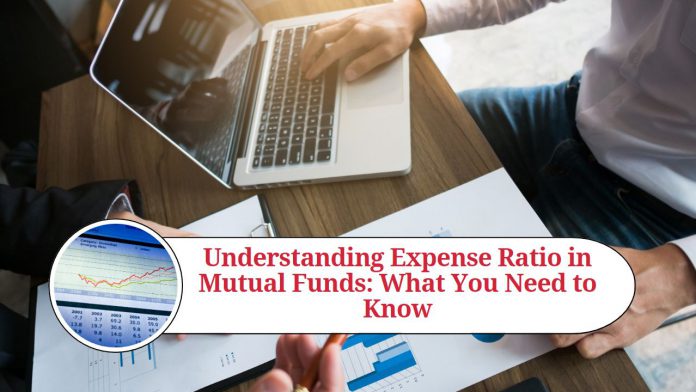When investing in mutual funds, it’s important to understand the various costs associated with owning these investments. One of the most important costs to consider is the expense ratio.
In this blog, we’ll dive into what an expense ratio is, how it impacts your investment returns, and what you should look for when selecting mutual funds.
What is an Expense Ratio?
An expense ratio is the annual fee that mutual fund companies charge investors for managing the fund. This fee covers the cost of running the fund, including expenses like management fees, administrative costs, and other operating expenses.
The expense ratio is expressed as a percentage of the fund’s assets under management (AUM). For example, if a fund has an expense ratio of 1%, and its AUM is $1 billion, then investors collectively pay $10 million in fees each year.
Why Does Expense Ratio Matter?
Expense ratio is important because it directly impacts the returns you earn from your mutual fund investment. The higher the expense ratio, the lower the returns you can expect to earn over time.
For example, if a mutual fund has an expense ratio of 2%, and it earns a return of 10%, then the net return to the investor is only 8%. On the other hand, if a mutual fund has an expense ratio of 0.5%, and it earns a return of 10%, then the net return to the investor is 9.5%.
Over time, these differences in net returns can add up to significant differences in the amount of wealth you accumulate through your investments.
What to Look for When Selecting Mutual Funds?
When selecting mutual funds, it’s important to consider both the performance and the expenses associated with the fund. Here are a few things to look for when evaluating the expense ratio of a mutual fund:
- Compare the expense ratios of similar funds – Different mutual funds charge different expense ratios based on their investment strategy, asset class, and other factors. When comparing funds, make sure to compare expense ratios of funds with similar investment objectives.
- Consider the fund’s performance – While expense ratio is an important factor to consider, it’s not the only one. Consider the fund’s performance history and its investment strategy to ensure it aligns with your investment goals.
- Look for low-cost index funds – Index funds are passively managed, which means they have lower expenses than actively managed funds. Look for low-cost index funds that track a broad-based market index like the S&P 500.
- Be mindful of other fees – In addition to the expense ratio, some mutual funds may charge additional fees like sales loads, redemption fees, or account maintenance fees. Be sure to factor in these costs when evaluating the overall cost of owning a mutual fund.
Final Thoughts
Expense ratio is an important factor to consider when investing in mutual funds. By understanding what an expense ratio is, why it matters, and what to look for when selecting mutual funds, you can make informed investment decisions that align with your long-term financial goals.
Read more useful content:
- How to invest in mutual funds
- Best Technology Mutual Funds
- All about mutual funds-types & importance
- The Power of SIP Investment in Mutual Funds
Frequently Asked Questions (FAQs)
Q: What is an expense ratio in mutual funds?
A: An expense ratio is the annual fee that mutual fund companies charge investors for managing the fund. This fee covers the cost of running the fund, including expenses like management fees, administrative costs, and other operating expenses.
Q: How is expense ratio calculated?
A: Expense ratio is calculated as a percentage of a fund’s assets under management (AUM). For example, if a fund has an expense ratio of 1%, and its AUM is $1 billion, then investors collectively pay $10 million in fees each year.
Q: How does expense ratio impact my investment returns?
A: Expense ratio directly impacts the returns you earn from your mutual fund investment. The higher the expense ratio, the lower the returns you can expect to earn over time.
Q: What is a reasonable expense ratio for a mutual fund?
A: A reasonable expense ratio for a mutual fund depends on the type of fund and its investment strategy. Generally, actively managed funds have higher expense ratios than passively managed index funds. However, investors should look for funds with expense ratios that are below the industry average for their respective category.
Q: Are lower expense ratio funds always better?
A: Lower expense ratio funds are generally better as they leave more money in your pocket. However, it’s important to consider the performance and investment strategy of the fund as well.
Q: Are there any other costs associated with owning mutual funds besides expense ratio?
A: Yes, there may be other costs associated with owning mutual funds such as sales loads, redemption fees, and account maintenance fees. It’s important to factor in these costs when evaluating the overall cost of owning a mutual fund.
Q: How can I find a mutual fund’s expense ratio?
A: Mutual fund companies are required to disclose the expense ratio in their fund’s prospectus and other marketing materials. You can also find a fund’s expense ratio on financial websites and through your brokerage account.
Q: Can I negotiate a lower expense ratio for a mutual fund?
A: No, you cannot negotiate a lower expense ratio for a mutual fund. The expense ratio is set by the mutual fund company and is the same for all investors in the fund.
Q: Should I only invest in funds with the lowest expense ratios?
A: No, it’s important to consider the performance and investment strategy of the fund as well. However, investors should look for funds with expense ratios that are below the industry average for their respective category.




















